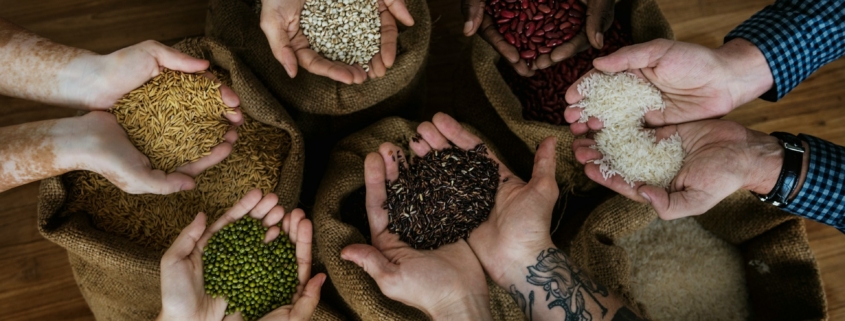Choosing the right seeds can make a significant impact on the success of any farming venture. In the case of mung beans, using certified seeds plays a critical role in ensuring a robust harvest. These certified seeds offer many benefits, including enhanced germination rates and overall plant health. By selecting proven seeds, farmers can also rely on consistent crop performance, even under varying conditions.
Certified seeds offer several advantages that contribute to better farming outcomes. They are known for not only supporting stronger plant growth but also safeguarding against various pests and diseases. By prioritising these seeds in your planting strategy, you lay the groundwork for a healthier, more productive mung bean harvest.
Understanding Certified Seeds
Certified seeds are seeds that have passed stringent quality checks to assure their purity, germination potential, and genetic identity. These seeds adhere to specific standards established to ensure that what you plant will grow into healthy, productive crops. The certification process involves rigorous testing at different stages, from the seed production field to the seed testing laboratories. This ensures that the seeds meet all the necessary criteria for quality and performance.
The certification process is designed to give farmers confidence in the ability of these seeds to perform well. It provides a guarantee that the seeds will yield as promised, thanks to the rigid standards set during their development. This process usually involves:
– Careful evaluation of seed crops for their ability to produce healthy and viable seeds.
– Rigorous testing for seed purity and germination rates.
– Confirmation of genetic identity to prevent accidental cross-breeding with less desirable varieties.
This assurance of quality is what sets certified seeds apart from non-certified options. By relying on these rigorously tested seeds, farmers can trust that they are planting crops with the best chances for success. This peace of mind is invaluable, particularly when dealing with the challenges that farming often presents.
Benefits of Using Certified Mung Bean Seeds
Opting for certified mung bean seeds can greatly improve the success rate of a crop. These seeds have a track record of delivering better germination rates, which directly influences the potential yield. By ensuring that each seed has the best chance of sprouting, farmers can maximise their harvest potential. In addition to better sprouting, certified seeds tend to resist pests and diseases more effectively than non-certified varieties. This natural defence reduces the need for chemical interventions, which is both cost-effective and environmentally friendly.
Another advantage of certified seeds is enhanced plant vigour and more uniform growth across the field. This not only creates a visually appealing and manageable crop but also ensures that each plant receives the right amount of nutrients without unnecessary competition. Lastly, certification serves as a guarantee of genetic purity and varietal identity, so farmers know exactly what they’re planting and can expect consistent results season after season.
How to Source Certified Mung Bean Seeds
Finding the right supplier for certified mung bean seeds is crucial. When selecting a supplier, consider their reputation and track record. It’s always a good idea to opt for a supplier with proven industry experience and who can provide documentation of the seeds’ certification. Certified seeds come with labels and papers that verify their quality and origin. Checking these documents is a smart move to confirm that you’re indeed getting certified products and not something of lesser quality.
It’s also wise to choose suppliers who are transparent about their seed sourcing and treatment processes. They should offer clear information on how the seeds are treated to enhance germination and protect against initial threats in the field. This level of transparency not only builds trust but ensures that you’re getting seeds that are ready to perform in various conditions.
Best Practices for Planting Certified Mung Bean Seeds
After securing high-quality seeds, the next step is to plant them correctly to capitalise on their potential. Seedbed preparation is the foundation of successful planting. Ensure the soil is well aerated and free from weeds or debris that could hinder growth. Testing and balancing soil pH levels can further enhance nutrient uptake.
Pay attention to planting times. Mung beans prefer warm conditions, so it’s best to plant after the last frost. Proper spacing is also important; seeds planted too closely may compete for nutrients, while those spaced too far apart can lead to uneven growth.
Maintaining soil health through organic matter and regular fertilisation can significantly impact the growth period. Consistent but manageable irrigation is essential, as water stress can hinder the plant’s progress and affect yield quality.
Maximising Your Mung Bean Harvest
Combining high-quality certified seeds with proper planting techniques creates the groundwork for a fruitful harvest. The benefits of using certified seeds, from improved resistance to pests to reliable crop performance, are clear. Leveraging these advantages through careful sourcing and planting maximises the potential of each growing season.
As the focus shifts towards achieving better crop outcomes, the emphasis on using certified seeds becomes ever more apparent. Adapting farming practices to incorporate these seeds into various stages of cultivation can indeed lead to improved yields and increased satisfaction come harvest time.
Wrap up your farming strategy with confidence by choosing certified seeds for your next mung bean crop. Discover the full potential of these optimum-quality seeds by exploring our comprehensive resources on mung bean seeds. Shepherd Grain offers experience and expertise to help you cultivate a successful and abundant harvest.


